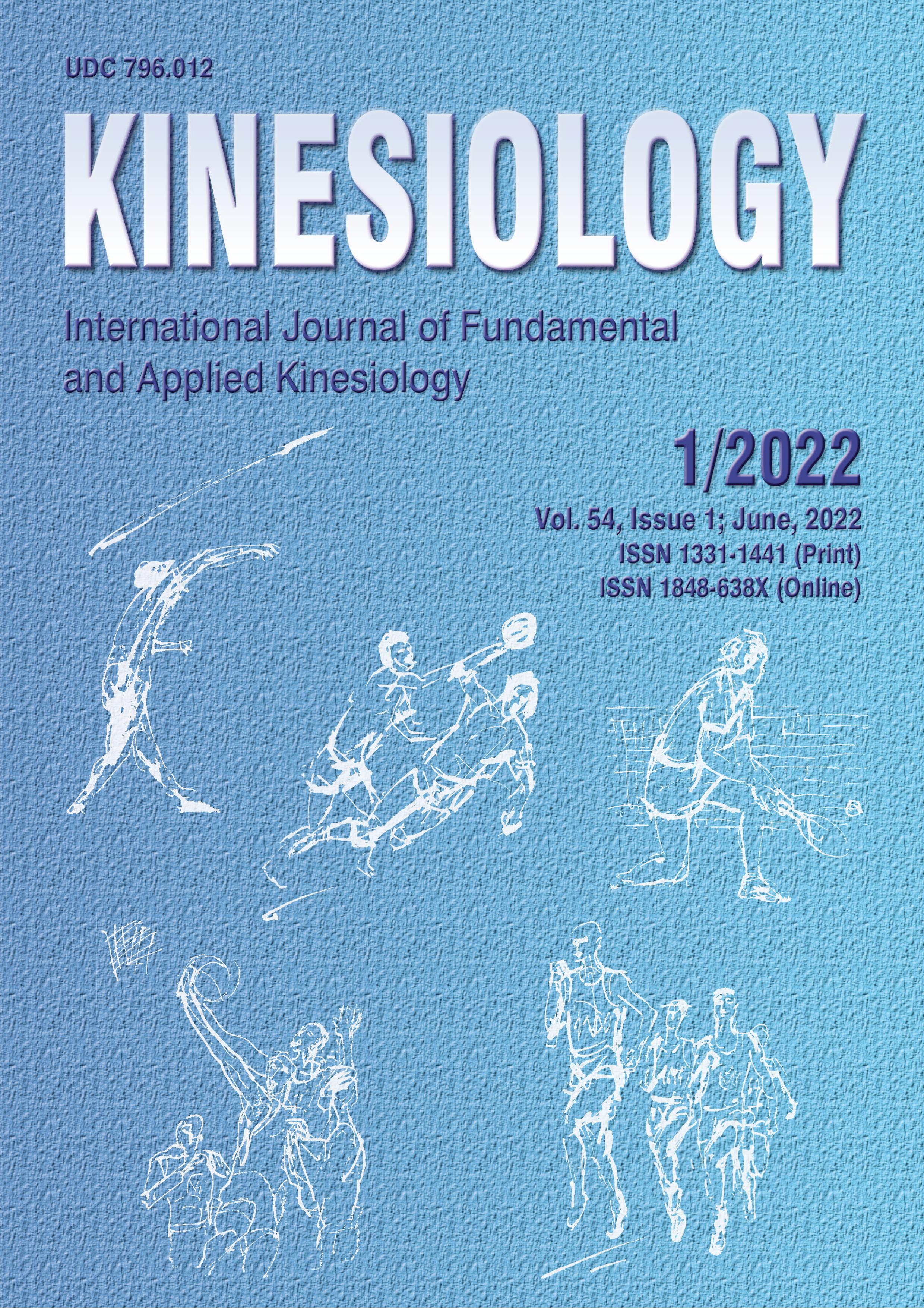RELIABILITY AND MEASUREMENT ERROR OF THE PROXIMAL, MEDIAL AND DISTAL PORTIONS OF THE VASTUS LATERALIS MUSCLE THICKNESS MEASURED WITH EXTENDED FIELD OF VIEW ULTRASONOGRAPHY
Abstract
The image obtained by static ultrasonography (US), despite being a validated measure to identify muscle thickness (MT), has a visualization capacity limited by the size of the transducer. The extended field of view (EFOV) is a more recent technique of obtaining muscle images by the US, which allows observing MT over the entire length of the muscle. The purpose of the study was to determine the reliability and the intra- and inter-rater error of the MT measurement in the proximal, medial and distal portions of the vastus lateralis using the EFOV US. Twenty-five men (age = 24 ± 4 years) paid a visit to the laboratory. Two independent US technicians identified the anatomical landmarks and collected the images using EFOV US, with a 4 cm linear transducer, 10 MHz frequency and 6 cm image depth. After all collections, a third researcher codified the images, which were sent to two independent image raters. After a week, the images were shuffled, recoded and sent back to the same evaluators. The values of the typical error of the measurement, coefficient of variation and intraclass correlation coefficient intra and inter-rater ranged between 0.01 and 0.03 cm, 0.47 and 2.32%, 0.990 and 0.998, respectively, for the two evaluators. The Bland-Altman analysis indicated high agreement and homoscedastic error of all comparisons. The high reliability and low errors observed, less than the increments typically found in training studies, reveal the great potential for EFOV US to determine MT in different portions of the vastus lateralis muscle.
Key words: Anatomy, Data accuracy, Hypertrophy, Lower extremity, Muscle tissue, Quadriceps muscle
Downloads
Published
How to Cite
Issue
Section
License

This work is licensed under a Creative Commons Attribution-NonCommercial 4.0 International License.
At Faculty of Kinesiology we recognize that access to quality research is vital to the scientific community and beyond. Kinesiology is non-profit journal and all costs of publishing and peer review process are covered by the publisher itself or other funding sources like Ministry of Science and Education of the Republic of Croatia. Full text papers are also available free of charge at http://hrcak.srce.hr/kineziologija. There are no restrictions on self archiving of any form of paper (preprint, postprint and publisher's version).
Articles are distributed under the terms of the CC BY - NC 4.0
Kinesiology does not charge any fees to authors to submit or publish articles in our journal.


